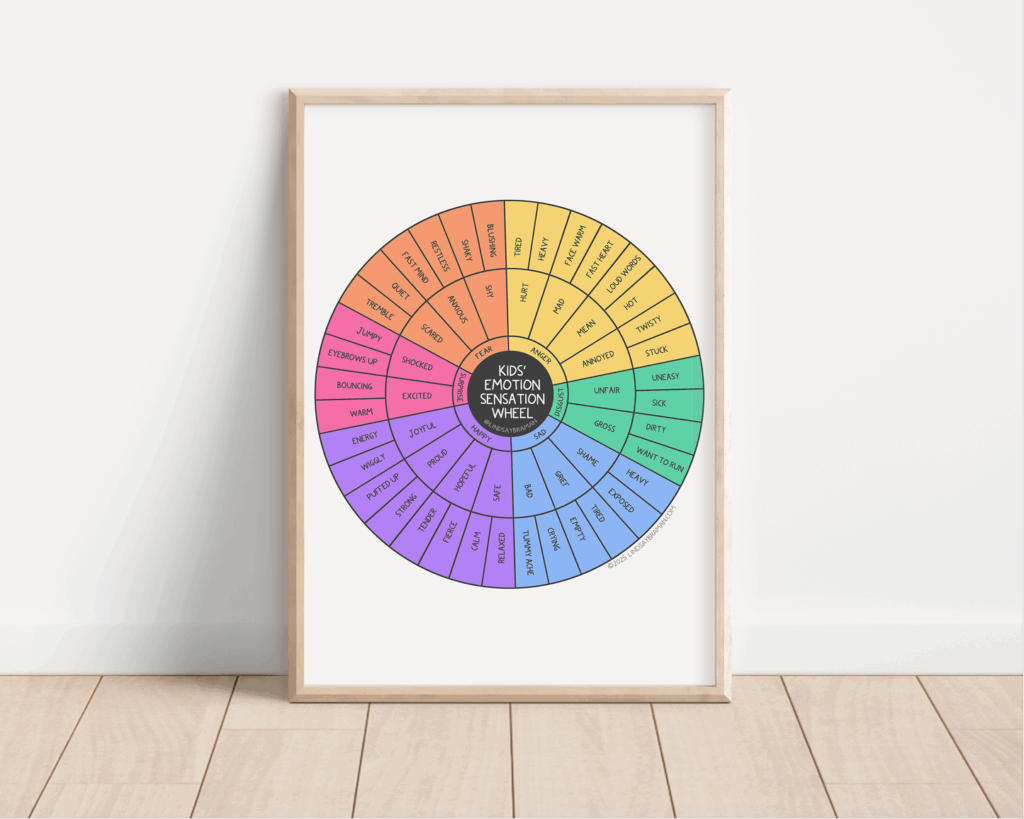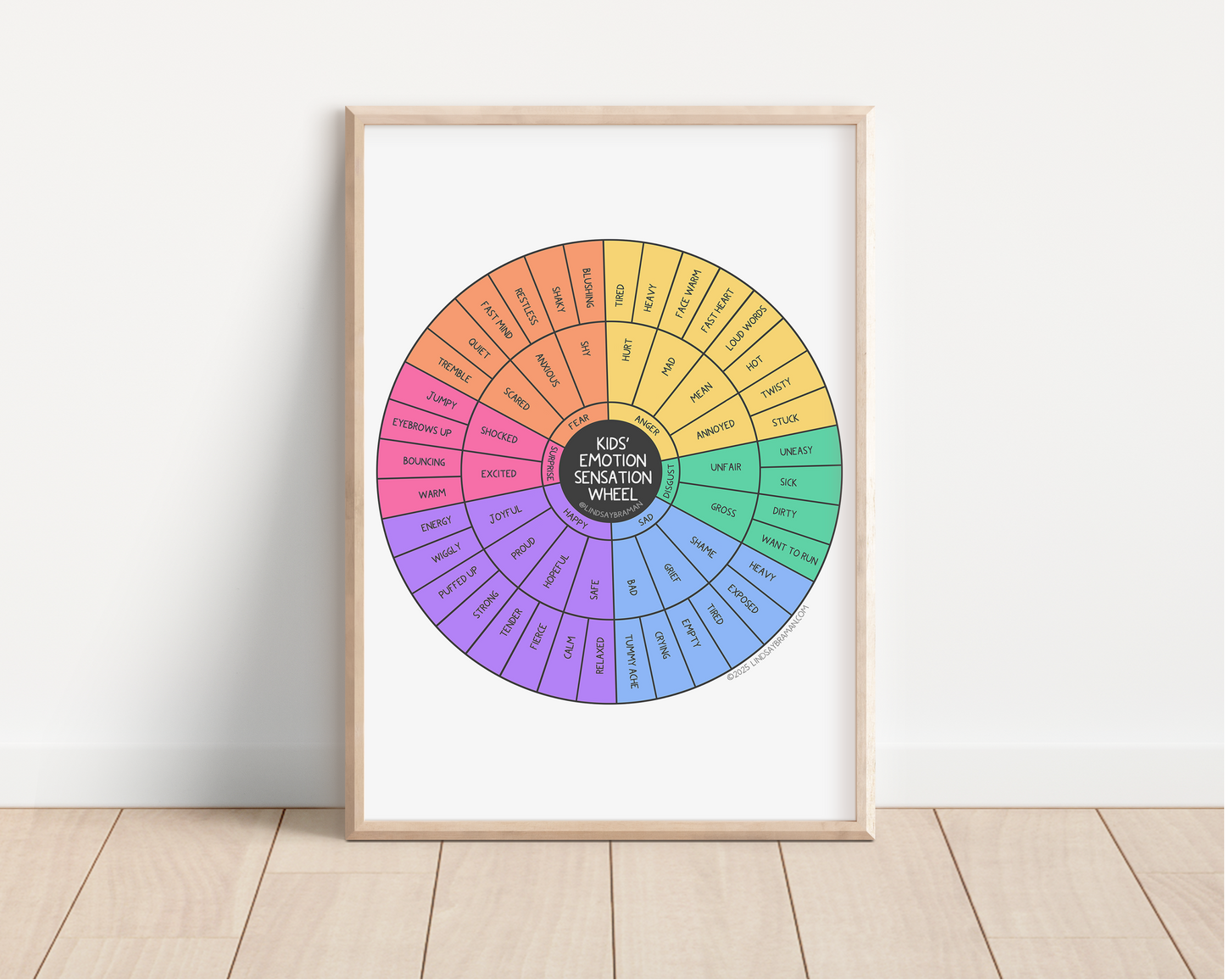
Unlocking Emotions: A Comprehensive Guide to the Feeling Sensation Wheel
Understanding our emotions is crucial for mental well-being, effective communication, and overall personal growth. The feeling sensation wheel, also known as the emotion wheel, is a valuable tool for identifying and articulating the nuances of human feelings. This article delves into the workings of the feeling sensation wheel, its benefits, and how to effectively use it to enhance emotional intelligence.
What is the Feeling Sensation Wheel?
The feeling sensation wheel is a visual representation of emotions, typically arranged in concentric circles. At the center are primary emotions, such as happiness, sadness, anger, fear, and surprise. Moving outward, the wheel branches into more specific and nuanced feelings. This structure helps individuals move beyond broad emotional categories and pinpoint exactly what they’re feeling.
One popular version of the wheel was developed by Dr. Gloria Willcox, though the concept has evolved and been adapted by various psychologists and therapists. Regardless of the specific design, the core function remains the same: to provide a visual aid for identifying and understanding a wide range of emotions. The feeling sensation wheel is a powerful tool for self-awareness and communication.
The Structure of the Feeling Sensation Wheel
Understanding the structure of the feeling sensation wheel is key to using it effectively. The wheel is typically organized into three or more layers:
- Primary Emotions: These are the fundamental emotions that are universally recognized. They often form the core of the wheel. Examples include joy, sadness, anger, fear, disgust, and surprise.
- Secondary Emotions: These emotions are variations and combinations of the primary emotions. They offer a more detailed description of how we feel. For example, under ‘anger,’ you might find ‘frustrated,’ ‘irritated,’ or ‘furious.’
- Tertiary Emotions: The outermost layer provides even more specific and subtle nuances of emotions. This level allows for a very precise articulation of feelings. For instance, under ‘frustrated,’ you might find ‘aggravated,’ ‘disappointed,’ or ‘exasperated.’
Benefits of Using the Feeling Sensation Wheel
The feeling sensation wheel offers several benefits for individuals seeking to improve their emotional intelligence and well-being:
Enhanced Emotional Awareness
By providing a visual map of emotions, the wheel helps individuals become more aware of their feelings. It encourages them to move beyond simple labels and explore the complexity of their emotional landscape. This improved self-awareness can lead to better decision-making and healthier relationships.
Improved Communication
The feeling sensation wheel provides a common vocabulary for discussing emotions. This can be particularly helpful in therapy, conflict resolution, or simply communicating with loved ones. By using the wheel, individuals can articulate their feelings more precisely, leading to clearer and more effective communication. Imagine trying to explain you are feeling “annoyed” versus “exasperated” – the feeling sensation wheel provides that nuance.
Increased Empathy
Understanding the range of human emotions can also increase empathy. By recognizing the different ways people might be feeling, individuals can better understand and connect with others. This can lead to stronger relationships and a more compassionate worldview. The feeling sensation wheel can be a valuable tool for developing emotional intelligence and empathy.
Better Emotional Regulation
When individuals are better able to identify and understand their emotions, they are also better equipped to regulate them. The feeling sensation wheel can help individuals recognize the early signs of emotional distress and take steps to manage their emotions before they escalate. For example, recognizing early feelings of frustration can allow one to take a break and prevent a full-blown angry outburst.
How to Use the Feeling Sensation Wheel Effectively
To get the most out of the feeling sensation wheel, consider these steps:
Identify the Primary Emotion
Start by identifying the primary emotion you are experiencing. Are you feeling happy, sad, angry, fearful, or surprised? This will serve as your starting point on the wheel. If you’re feeling overwhelmed, take a moment to breathe and center yourself. Reflect on the situation that triggered your emotions.
Explore Secondary Emotions
Once you’ve identified the primary emotion, move outward to explore the secondary emotions associated with it. Do any of these resonate with you? For example, if you’re feeling angry, are you also feeling frustrated, irritated, or furious? Consider the intensity of your feelings. Are they mild, moderate, or intense? This will help you narrow down your emotional state.
Pinpoint Tertiary Emotions
If the secondary emotions still feel too broad, move to the outermost layer of the wheel to pinpoint the tertiary emotions. These offer the most specific and nuanced descriptions of feelings. This step can be particularly helpful for gaining a deeper understanding of your emotional state. For example, if you’re feeling frustrated, are you also feeling aggravated, disappointed, or exasperated?
Reflect on the Emotion
Once you’ve identified the specific emotion you’re feeling, take some time to reflect on it. Why are you feeling this way? What triggered the emotion? What can you learn from this experience? Journaling can be a helpful tool for this process. Writing down your thoughts and feelings can provide clarity and insight.
Communicate Your Feelings
Using the feeling sensation wheel, practice communicating your feelings to others. This can be especially helpful in relationships or situations where clear communication is essential. Be honest and open about your emotions, and use the wheel to articulate them precisely. Remember, effective communication is key to building strong and healthy relationships. The feeling sensation wheel will help you with that.
Examples of Using the Feeling Sensation Wheel in Different Scenarios
Let’s look at some practical examples of how the feeling sensation wheel can be applied in different situations:
Scenario 1: Workplace Conflict
Imagine you’re in a meeting, and a colleague dismisses your idea. You might initially feel ‘angry.’ Using the feeling sensation wheel, you realize you’re more accurately feeling ‘frustrated’ and ‘disrespected.’ This understanding allows you to communicate your feelings calmly and constructively, focusing on the specific issue rather than reacting impulsively. [See also: Conflict Resolution Strategies]
Scenario 2: Relationship Issues
Your partner forgets your anniversary. You might feel ‘sad.’ However, the wheel helps you identify that you’re also feeling ‘disappointed’ and ‘unloved.’ This deeper understanding allows you to express your needs and expectations more clearly, leading to a more productive conversation. The feeling sensation wheel helps you articulate complex emotions.
Scenario 3: Personal Growth
You’ve been working towards a personal goal but haven’t seen the desired results. You might feel ‘discouraged.’ By using the feeling sensation wheel, you realize you’re also feeling ‘anxious’ and ‘inadequate.’ This awareness prompts you to re-evaluate your approach, seek support, and adjust your expectations. Recognizing that you are feeling “anxious” instead of only “discouraged” can lead you to the right support resources. This is the power of the feeling sensation wheel.
Limitations of the Feeling Sensation Wheel
While the feeling sensation wheel is a valuable tool, it’s important to acknowledge its limitations:
- Subjectivity: Emotions are subjective, and the way they are categorized on the wheel may not perfectly align with everyone’s experience.
- Cultural Differences: Emotional expression and interpretation can vary across cultures, so the wheel may not be universally applicable.
- Oversimplification: The wheel simplifies complex emotions into discrete categories, which may not fully capture the nuances of human feelings.
Despite these limitations, the feeling sensation wheel remains a useful tool for enhancing emotional awareness and communication. Its value lies in providing a framework for exploring and understanding the complexity of human emotions. Just remember that it is a tool, and not a perfect representation of emotions.
The Feeling Sensation Wheel and Mental Health
The feeling sensation wheel can be a valuable asset in mental health practices. Therapists often use it to help clients identify and articulate their emotions, which is a crucial step in addressing mental health challenges. By providing a visual aid, the wheel can make it easier for individuals to explore their emotional landscape and gain a deeper understanding of their mental well-being. The feeling sensation wheel can also be a great self-help tool.
It’s important to note that the feeling sensation wheel is not a substitute for professional mental health care. If you are struggling with your emotions or mental health, it’s essential to seek help from a qualified therapist or counselor. [See also: Finding a Therapist Near You]
Conclusion
The feeling sensation wheel is a powerful tool for unlocking the complexity of human emotions. By providing a visual map of feelings, it helps individuals enhance emotional awareness, improve communication, increase empathy, and better regulate their emotions. While it has limitations, its benefits make it a valuable asset for personal growth, relationships, and mental well-being. By using the feeling sensation wheel effectively, individuals can gain a deeper understanding of themselves and the world around them, leading to a more fulfilling and meaningful life. The feeling sensation wheel is a valuable tool for understanding yourself and others.

